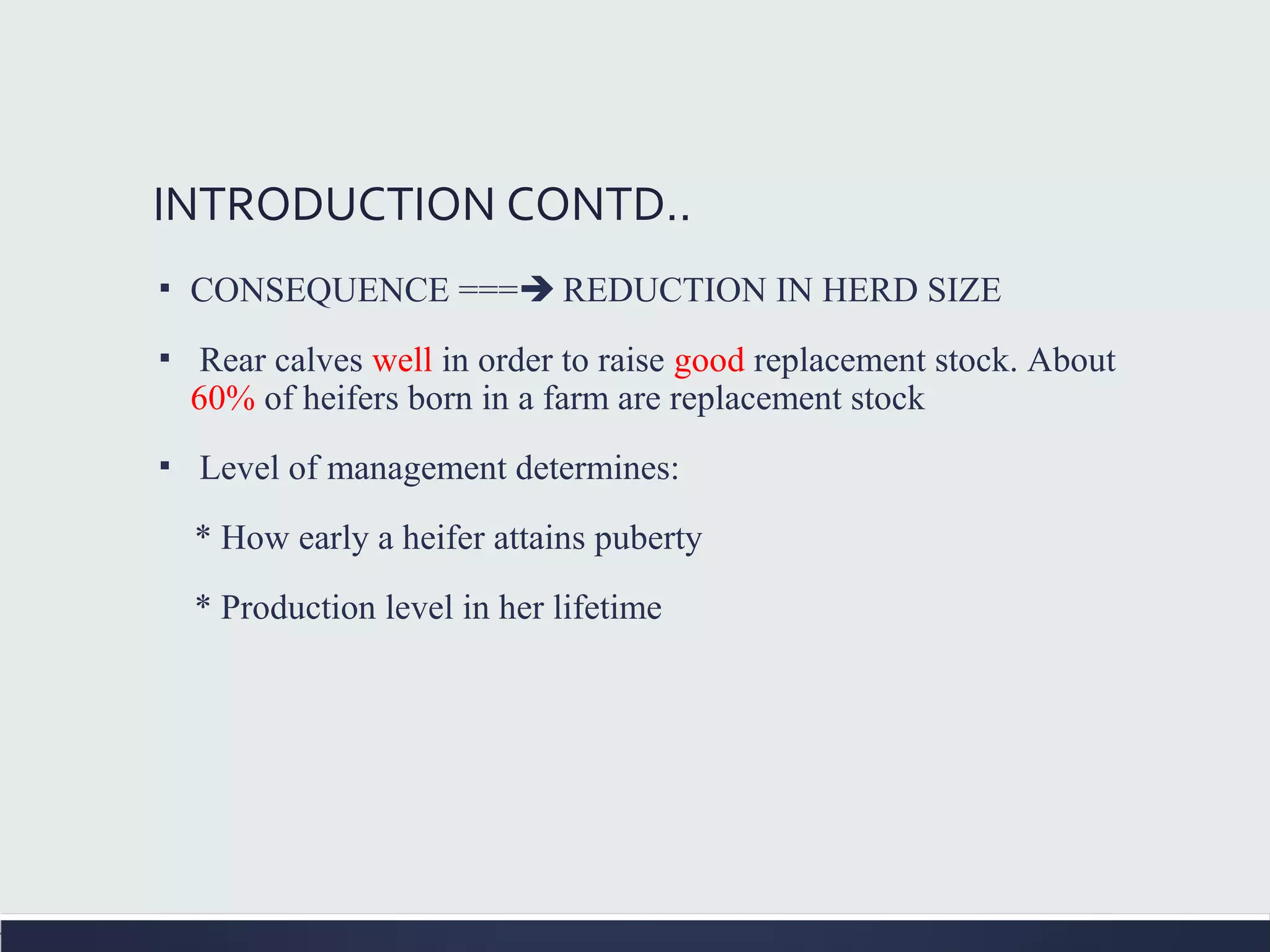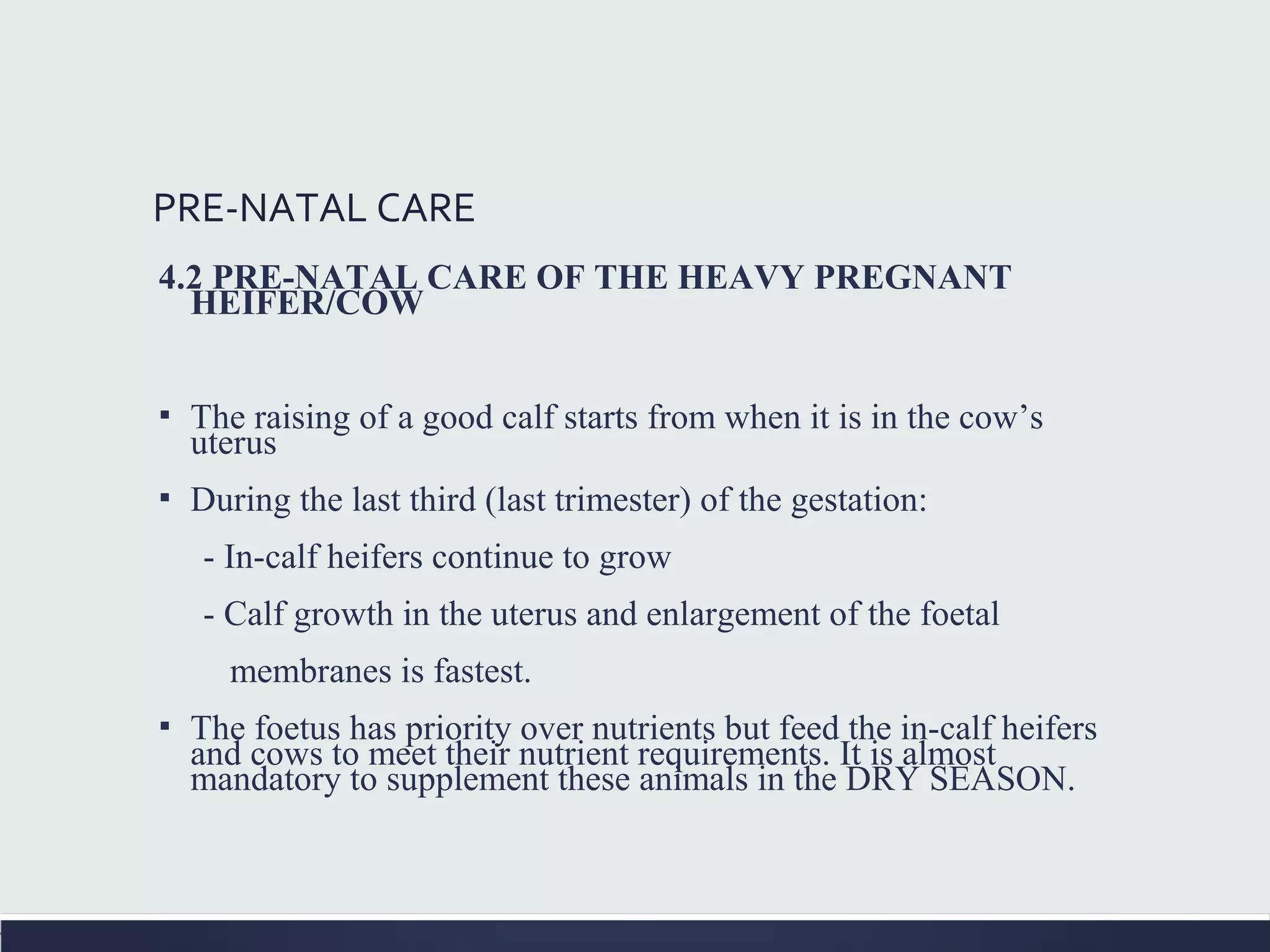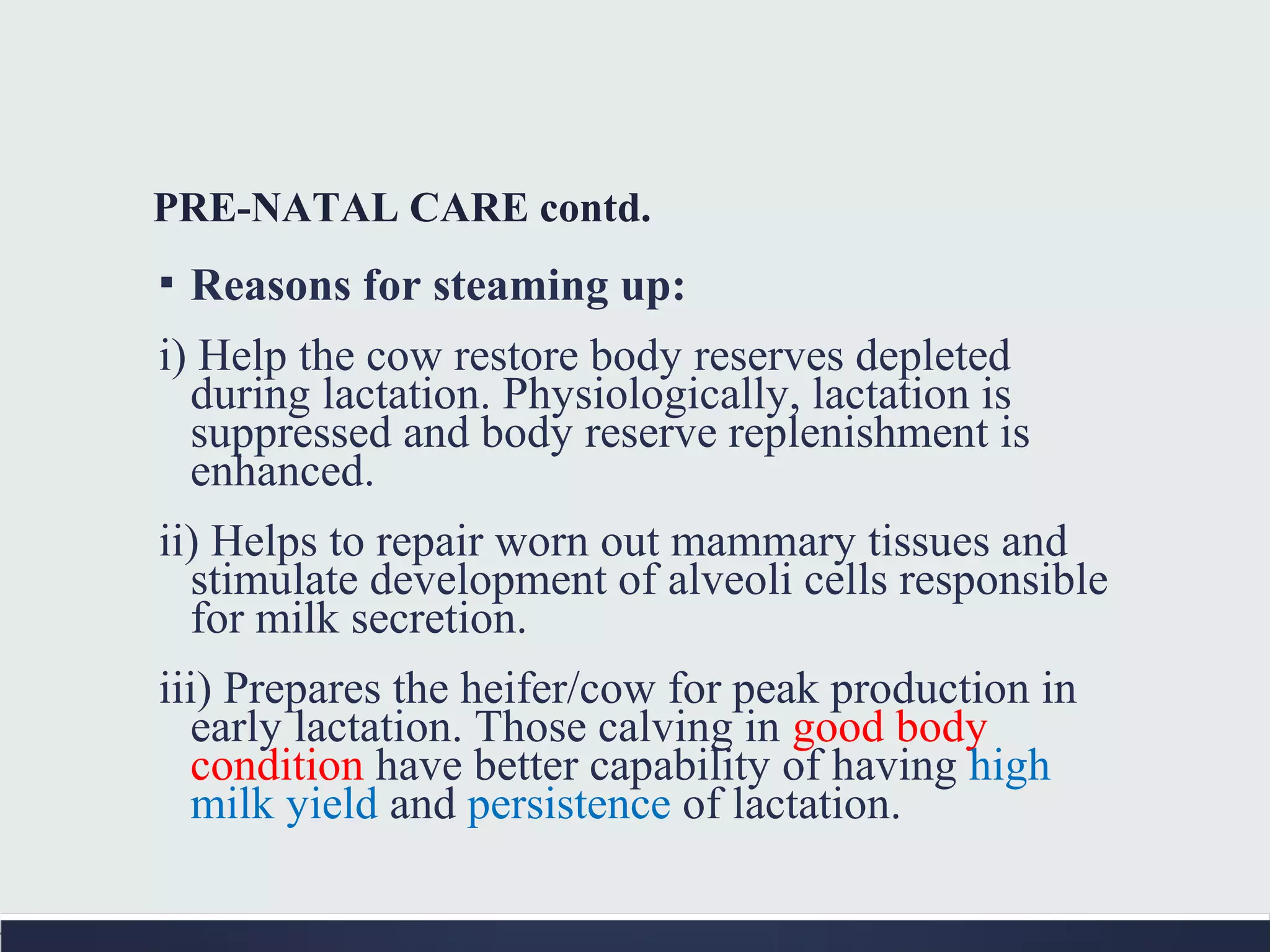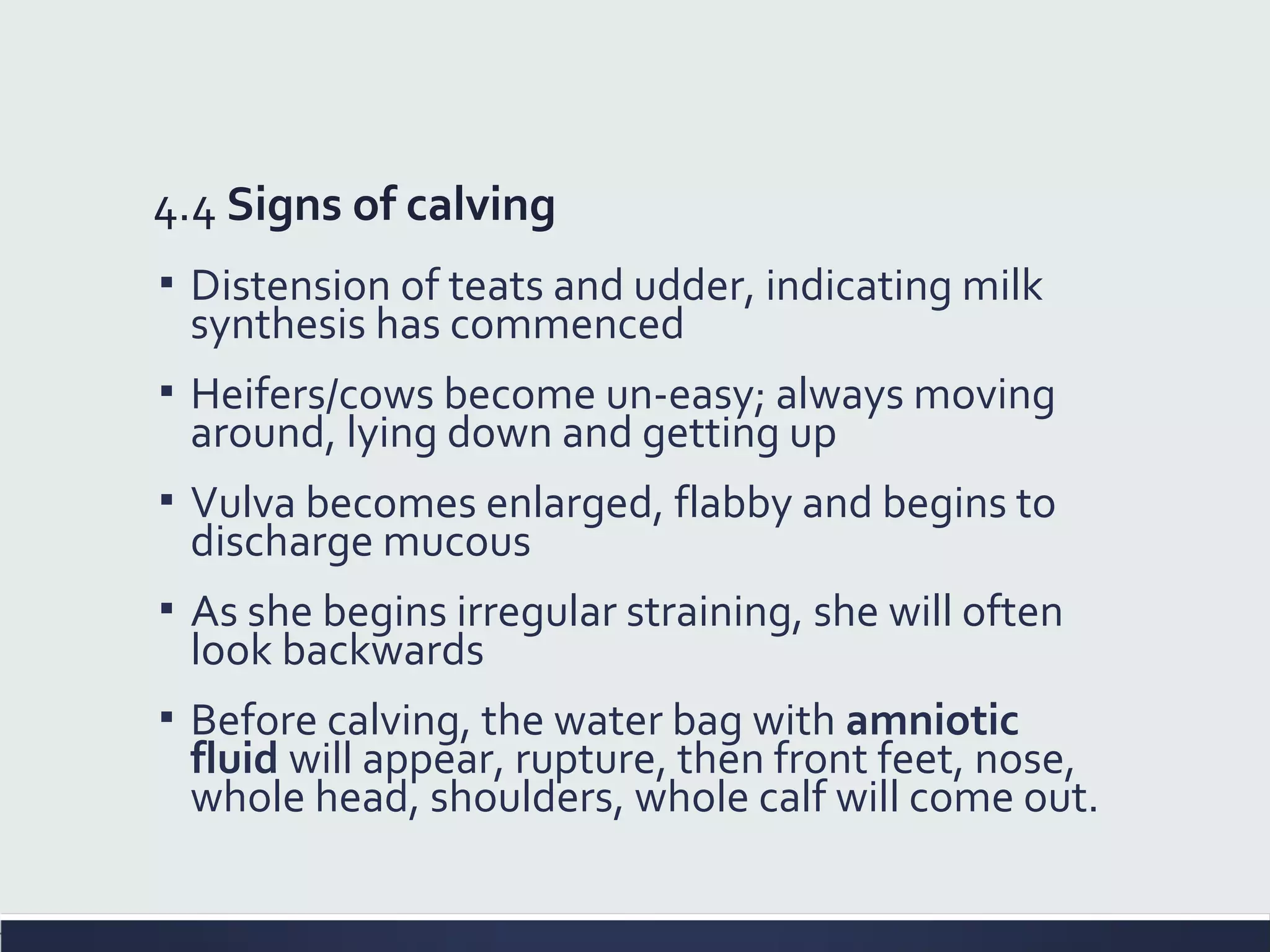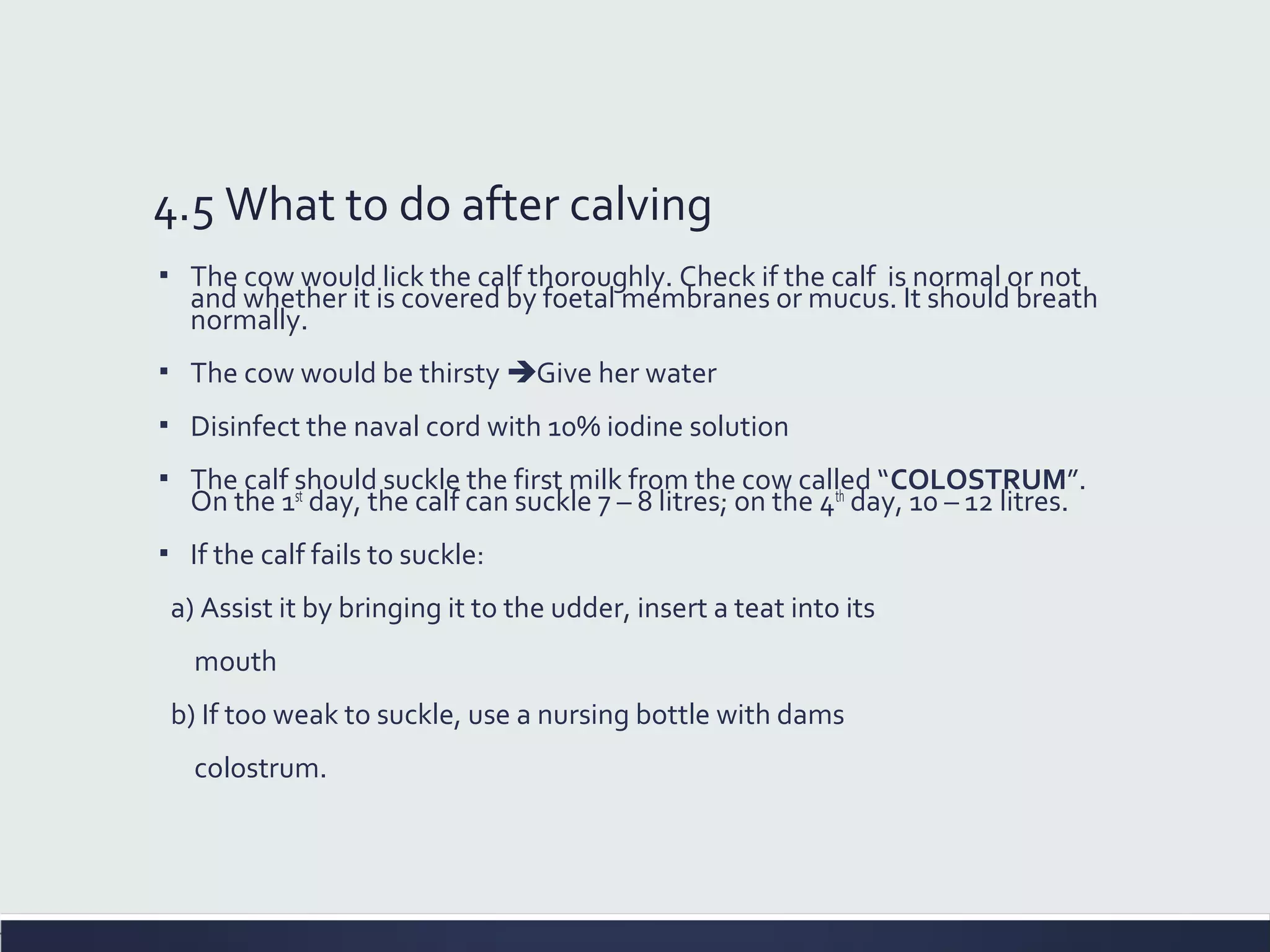The document provides comprehensive guidelines on calf management, focusing on the importance of prenatal care, nutrition, and calving procedures. Key elements include ensuring proper feeding of pregnant cows for optimal calf health, recognizing signs of calving, and taking immediate actions post-calving to support both cow and calf. The document stresses the significance of colostrum for calf immunity and provides solutions for situations where maternal colostrum is unavailable.

